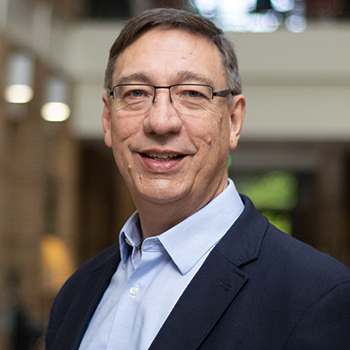
Carlos Cesnik Honored with AIAA Structures, Structural Dynamics, and Materials (SDM) Award
Michigan Aerospace Engineering Chair receives prestigious award at 2024 SciTech Conference

Michigan Aerospace Engineering Chair receives prestigious award at 2024 SciTech Conference

We are thrilled to announce that Carlos Cesnik, the Clarence L. (Kelly) Johnson Professor and Richard A. Auhll Department Chair of Aerospace Engineering, is set to receive the prestigious 2024 Structures, Structural Dynamics, & Materials (SDM) Award from the American Institute of Aeronautics and Astronautics (AIAA). The award ceremony is scheduled to take place at the AIAA SciTech Forum and Exposition on January 9, 2024. Established in 1967, this distinguished honor is given to an individual who has demonstrated remarkable technical or scientific contributions in the field of aerospace structures, structural dynamics, or materials.
“I am deeply honored to receive this award and humbled to be part of such a selective group of previous awardees, many of whom have been role models to me,” comments Cesnik. “I share this award with all my students and colleagues, whose relentless dedication and collaboration were key parts of this journey. Thank you, this honor is a testament to our collective efforts and further fuels my passion for knowledge and discovery in the field of aerospace structures.”
Professor Cesnik’s commitment to advancing aerospace engineering research and education is evident in his groundbreaking work. His contributions extend beyond theoretical advancements and to his dedication towards advancing the next generation of aerospace engineers. The recognition he receives through the SDM Award is a testament to the profound impact he has made on the future of flight structures.
Professor Cesnik’s accomplishments have significantly contributed to shaping the future of flight structures based on multi-functionality. This allows the structure to interact with and adapt to the environment, manipulate aerodynamic loads, monitor their condition, and provide the ability to adjust the load path when damage occurs. This research has provided fundamental new insight into the physics of advanced structural systems, contributed to educating the future workforce, and facilitated the transfer of research advances to industry and government labs.
Cesnik’s research is trademarked by the judicious combination of numerical and experimental approaches. This unique approach not only validates the solutions considered, but also provides his students with a complete educational experience by incorporating a degree of realism into their analyses and simulations.
The following key accomplishments in structures, structural dynamics and materials showcase the breadth and depth of Professor Cesnik’s contributions:
Professor Cesnik’s nomination is supported by over 400 papers in journals and conferences — several of which have been honored with best paper awards— and several book chapters. He has also impacted 37 PhD students and their dissertations with guidance and mentorship. His profound contributions towards the University of Michigan and the aerospace industry establishes an exceptional foundation for his deserving of this award. We are honored to have him as our Aerospace Engineering Chair and congratulate him on his many accomplishments!